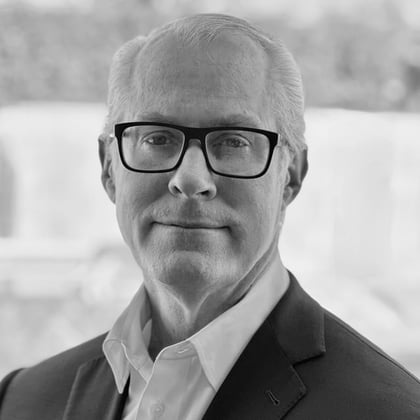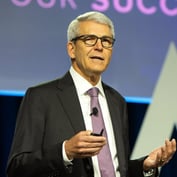What You Need to Know
- The company's financial professionals support nearly $90 billion in assets via a core technology platform.
- Who will win out? Advisor-led and advisor-owned RIAs that can define their own service model.
- Who will lose out? It's likely to be the banks and wirehouses, with some important caveats.
It’s been one month since Dynasty Financial Partners tapped former Charles Schwab & Co. executive Tim Oden as an executive-in-residence. The RIA industry veteran was tasked with helping the growing firm navigate the next phase of its journey in an equally evolving industry.
Now that he’s got his sea legs under him, Oden said he is even more optimistic about joining the enterprise, pointing to Dynasty’s 50-plus affiliated firms and nearly 350 advisors supporting nearly $90 billion in assets via Dynasty’s core technology platform.
Oden noted that the firm grew more in 2023 that in any year in its 14-year history, and 2024, he said, is off to a great start. Dynasty continues to enjoy both strong organic growth and significant interest from potential breakaway advisor teams from a variety of industry channels — the big brokerage shops to the major private banks and everywhere in between. While it may be hard to replicate 2023’s success in pure dollar terms, Oden said, the chances are good that Dynasty will enjoy anther record year.
Oden made the case for Dynasty’s approach to the advisory business alongside the firm’s president and CEO, Shirl Penney. The pair, who offered a detailed review of Dynasty’s strategy for growth during a recent webcast, argued that their optimism is based firmly in the data — and that all signs indicate that the independent registered investment advisor movement is alive and well.
Outsourcing to Save on Fixed Costs
Penney and Oden said the firm recently conducted an internal growth survey to understand how its affiliates have been performing in an industry environment with both heightened client demand and higher client expectations.
“What the data shows us really clearly is that firms who outsource with us save on fixed costs,” Oden said. “On average, an RIA of $1B that is powered by Dynasty versus one that is not can operate successfully with six fewer people. That means lower fixed costs in terms of headcount, and it also means more time to focus on both organic and inorganic growth. And remember, third-party vendors also take time to manage, so the result of outsourcing is even more time to grow.”
Oden said Dynasty’s internal performance data indicates that firms that fully embrace the platform have grown almost twice as fast as their industry peers who do everything in-house.
“So, this is obviously positive information for us to tell our story,” Oden explained, “but it also helps us to better identify who makes an ideal Dynasty partner. To put it bluntly, someone who wants to build their own home from scratch and doesn’t want to utilize outsourcing wouldn’t be a good fit for us, and that’s OK. We’re looking for those firms that are looking for a partner and that have a mindset of ‘outsource to grow.’”
Importance of Organic Growth
As Penney emphasized, inorganic acquisitions and advisor onboarding have been a key part of Dynasty’s growth and success, and some of the firm’s recent deals have been particularly important for both the level of incoming assets and the expertise coming in the door.
That said, long-term success for Dynasty — and any firm, for that matter — must also involve strong organic growth that comes from winning more clients and more assets the old-fashioned way. This means that referrals remain important, as does marketing and brand awareness. Above all, though, is excellent client service and transparent pricing.
“The good news is that organic growth has always been a strength of the independent RIA community, because the advisors have always had such a strong story to tell about truly being on the side of the client,” Penney said. “That’s allowed them to push organic growth very high, historically, but we have to watch very carefully for any signs that we have stalled in that effort.”
In other words, there’s a degree of risk that comes from putting a lot of effort into dealmaking and pursuing inorganic growth through acquisitions. That danger is jeopardizing either the firm’s culture or its ability to serve existing clients in a cohesive manner.
“Staying disciplined here is so key,” Oden said. “The bottom line is that nothing drives the value of your business more than being able to sustain growth at 10% or 15% a year organically. Too many advisors lose focus on that, given the big attention being paid to M&A trends.”









 March 21, 2024 at 09:47 AM
March 21, 2024 at 09:47 AM











